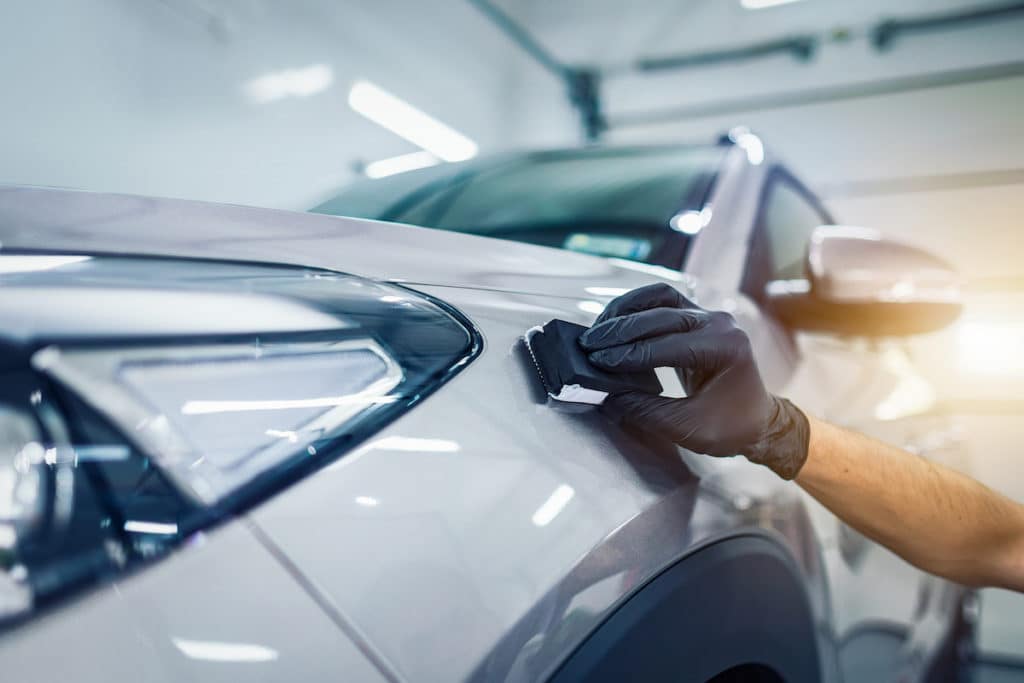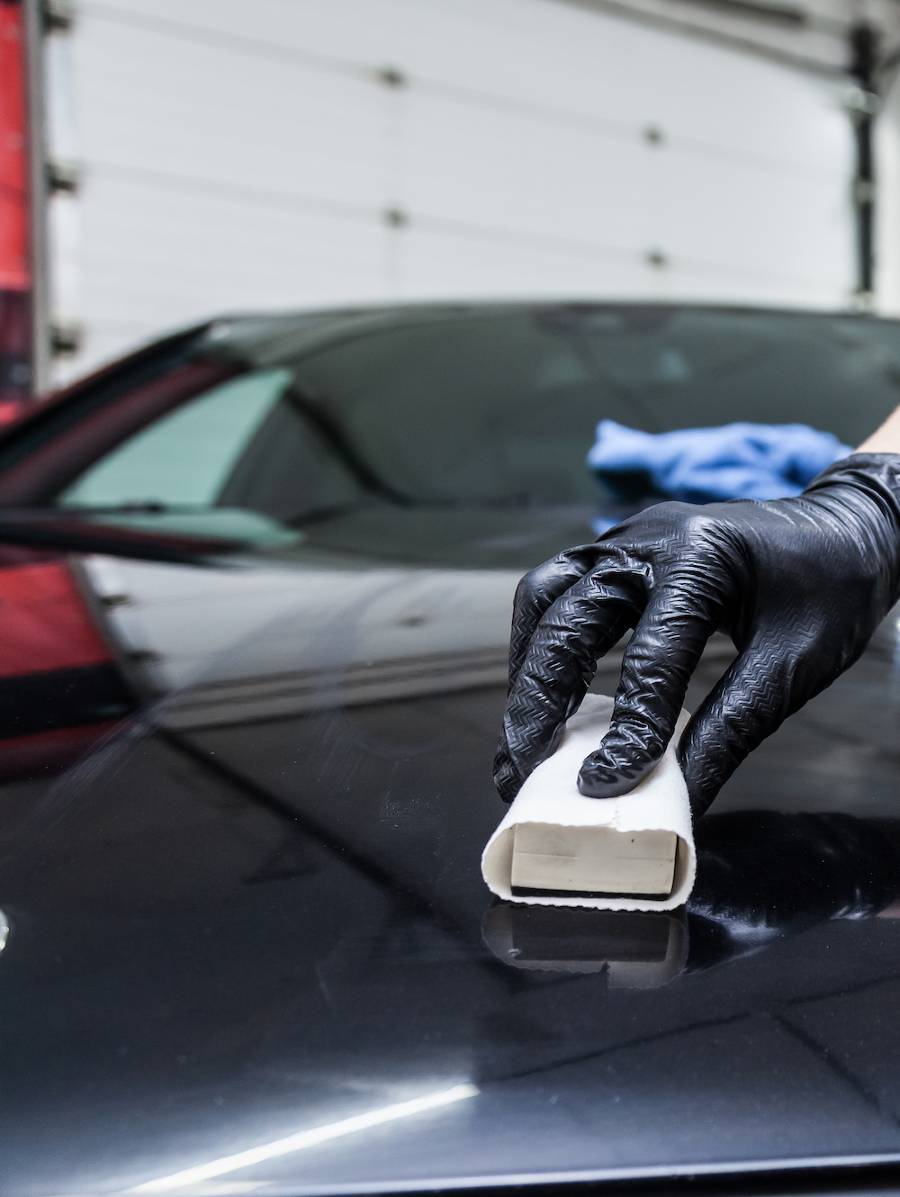The Long-Term Benefits of Choosing Ceramic Coating Philadelphia for Your Auto
The Long-Term Benefits of Choosing Ceramic Coating Philadelphia for Your Auto
Blog Article
Why Ceramic Layer Is the Ultimate Option for a Remarkable Finish
Ceramic finish has become a leading solution for those seeking a perfect finish for their automobiles, thanks to its impressive resilience and protective functions. This advanced fluid polymer not only bonds flawlessly with manufacturing facility paint but also provides a formidable barrier versus usual threats such as scratches, UV rays, and toxic wastes. Moreover, its hydrophobic buildings streamline upkeep while boosting aesthetic charm. Nonetheless, understanding just how this modern technology compares to traditional methods and exploring its application subtleties can disclose much more about its value. What aspects absolutely established ceramic covering apart?
What Is Ceramic Coating?

When applied properly, ceramic layer develops a hydrophobic surface that wards off water and dirt, making it much easier to maintain and clean up. Unlike conventional waxes or sealers, which typically supply short-lived security, ceramic coverings can last for a number of years, depending on the item quality and application approach. The procedure of using ceramic coating calls for thorough prep work, consisting of thorough cleaning and occasionally paint modification, to make sure optimal bonding and efficiency.
Ceramic coatings are not limited to automobile surfaces; they can additionally be made use of on various products, including glass, metal, and plastics, providing a versatile option for boosting security. Generally, ceramic layer represents a considerable advancement in surface area defense innovation, integrating both practical and aesthetic advantages for a variety of applications.
Benefits of Ceramic Finishing
While lots of surface area protection alternatives exist, the benefits of ceramic finishing stand apart due to its special residential properties and durable performance. Among the primary benefits is its remarkable sturdiness. Ceramic Coating Philadelphia. Unlike traditional wax or sealers that call for regular reapplication, ceramic finishes provide a resilient layer that can last for a number of years, dramatically decreasing maintenance efforts
One more significant benefit is improved security versus ecological pollutants. Ceramic coatings develop a hydrophobic surface that repels water, dust, and various contaminants, making it easier to cleanse. This function not just preserves the vehicle's look but likewise reduces the threat of corrosion and oxidation, particularly in extreme weather.
In addition, ceramic finishings use premium resistance to UV rays, protecting against fading and deterioration of paint over time. This UV security is crucial for maintaining the aesthetic value of surfaces and vehicles subjected to direct sunshine.
Additionally, the shiny surface accomplished with ceramic covering boosts the total visual appeal, offering surface areas a showroom-quality shine. Generally, ceramic finishings stand for a considerable advancement in surface security technology, offering enduring benefits that accommodate both useful and aesthetic demands.
Exactly How It Functions
Comprehending the scientific research behind ceramic finishes exposes exactly how they provide such exceptional defense and long life. At its core, a ceramic finish is a liquid polymer that chemically bonds with the lorry's manufacturing facility paint. This bonding creates click resources a safety layer that is both oleophobic and hydrophobic, repelling water, dirt, and oil. The main component of the majority of ceramic layers is silicon dioxide (SiO2), which is derived from quartz. This compound adds to the finishing's solidity and resistance to scratches, UV rays, and environmental contaminants.
The application procedure includes multiple actions, including surface preparation, which is crucial to attaining ideal adhesion. As soon as applied, the finish goes through a treating procedure, during which it sets and creates a semi-permanent bond with the paint surface. This bond is what distinguishes ceramic finishes from conventional waxes and sealants, giving a longer-lasting safety obstacle that can sustain for years.
Additionally, the density of the covering can enhance its safety high qualities, guaranteeing that it can endure extreme problems. Ultimately, the scientific research of ceramic coatings incorporates sophisticated products with innovative application strategies to deliver an unmatched degree of security and visual enhancement for automobiles.
Comparison With Typical Techniques
When contrasted to traditional paint defense techniques such as sealants and waxes,The advantages of ceramic coverings become particularly noticeable. While waxes use a momentary luster, normally lasting a few weeks to a number of months, ceramic coverings provide a lasting protective layer that can sustain for numerous years. This sturdiness significantly decreases the regularity of reapplication, making ceramic finishings a more affordable solution gradually.
In addition, typical approaches frequently call for considerable preparation and numerous applications to accomplish a satisfactory level of security. In Discover More comparison, ceramic finishes bond at a molecular degree with the lorry's surface, developing a durable shield versus environmental pollutants like UV rays, acid rainfall, and roadway salts. This bond improves the vehicle's resistance to scratches and swirl marks, which are widespread with standard waxes and sealers.
Additionally, the hydrophobic residential properties of ceramic coatings repel water and dirt, leading to much easier cleaning and maintenance. In comparison, wax and sealant-treated surface areas can draw in crud, necessitating more frequent cleaning - Ceramic Coating Philadelphia. On the whole, ceramic coverings not just offer exceptional protection however also supply a much more aesthetically appealing and long-lasting finish, developing them as the preferred choice for critical vehicle proprietors
Application and Maintenance Tips

Using a foam applicator, use the layer in tiny areas, complying with the maker's standards relating to density and overlap. Enable enough curing time between coats, commonly 1 day, to guarantee proper bonding. After application, it is vital to avoid exposure to water or rough aspects for a minimum of a week to allow the finish to completely heal.
Additionally, making use of a ceramic maintenance spray can enhance the covering's hydrophobic residential or commercial properties and longevity. Normal assessments for any type of indications of wear will help maintain the coating's honesty and preserve that excellent coating.
Final Thought
In conclusion, ceramic finishing emerges as a premium alternative for accomplishing a perfect vehicle surface. By creating a durable bond with manufacturing facility paint, ceramic finish successfully shields against scratches, UV rays, and environmental impurities.

Report this page